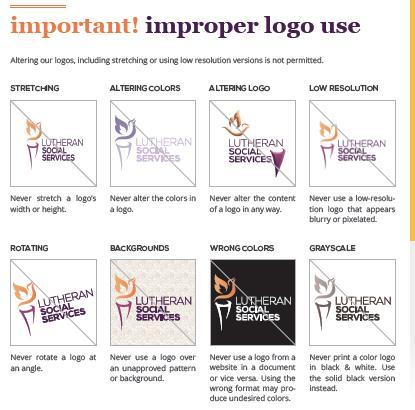
It’s a mystery to me how many times I ask a client if they have a brand guide to share and they look at me like I’m speaking a different language. A company’s brand is so critical to its success. I can’t believe so many business leaders don’t document their brand and lock down how the brand is used and portrayed. That is the function of a brand guide.
A brand guide is…
A comprehensive document that outlines how a company presents itself both internally and externally, including its visual identity, messaging, and tone. It typically includes rules and guidelines for the use of logos, colors, typography, imagery, and other creative assets, as well as instructions for how to communicate the brand’s message and values to the public. It also often includes the company’s mission, vision, purpose, values, USPs, and brand persona/voice/tone. The purpose of a brand guide is to ensure that a company’s brand is presented consistently across all media and channels, and to provide a clear and cohesive identity for the brand. It is a manual that everyone working for the organization follows when representing or communicating for the company.
With a brand guide, the message a customer receives in a brand email is consistent with the message they see in the brand’s store. Similarly, the coffee you purchase at a coffeeshop chain in Columbus will taste the same as the coffee you buy in the same coffeeshop chain in Seattle. An internal brand is just as important. An employee will see the brand’s values in every internal policy, communication, and procedure. A strong brand guide ensures loyalty, engagement, and commitment from everyone who comes into contact with the company.
Real life examples
At LSS, we had an external brand book that we gave to community partners who were fundraising for our programs or working with us on advocacy issues. That way when they needed to create a communication piece that featured our programs, they had the correct logos, graphics, and verbiage to use. The external brand book also gave examples about what NOT to do, which was often more important for these users. For example, we asked they do not stretch the logo or change the colors. We also had stringent social media guidelines to follow in terms of both images and messaging. The external brand book was an effective way to keep control of the brand while still encouraging community engagement.


We also had a more extensive brand guide for managers within the organization that included all of the standards that define and maintain a consistent tone and voice through written content. These writing guidelines are for grammar, tone, formatting, and other editorial specifics. This is really important for managers and directors to have because they often represent the organization externally to supporters, community leaders, and clients. These guidelines ensure consistent language through all written and verbal communication.
For internal branding, we gave all employees a small brand book that featured our mission, values, and purpose statement. This desk copy book was helpful in reminding our employees why we were there and who we were serving. It also promoted a consistent and positive internal brand identity.

Famous brand examples
There are some great brand guide examples online. Here are some of my favorites:
(I love that they include rules about linking to their app and using their metadata)
(this is just for the logo but it is extensive!)
(this is linked in their media kit which is a fabulous idea and all brands should do it)
(this is a local B2B company that shows brand guidelines are critical for any business in any industry.)
If your company does not have a brand guide book, the time is now to create one. Your brand is too important to leave to chance and whim. I can help. Give me a call and let’s start documenting your brand together.
